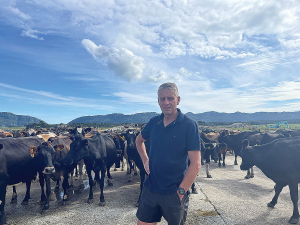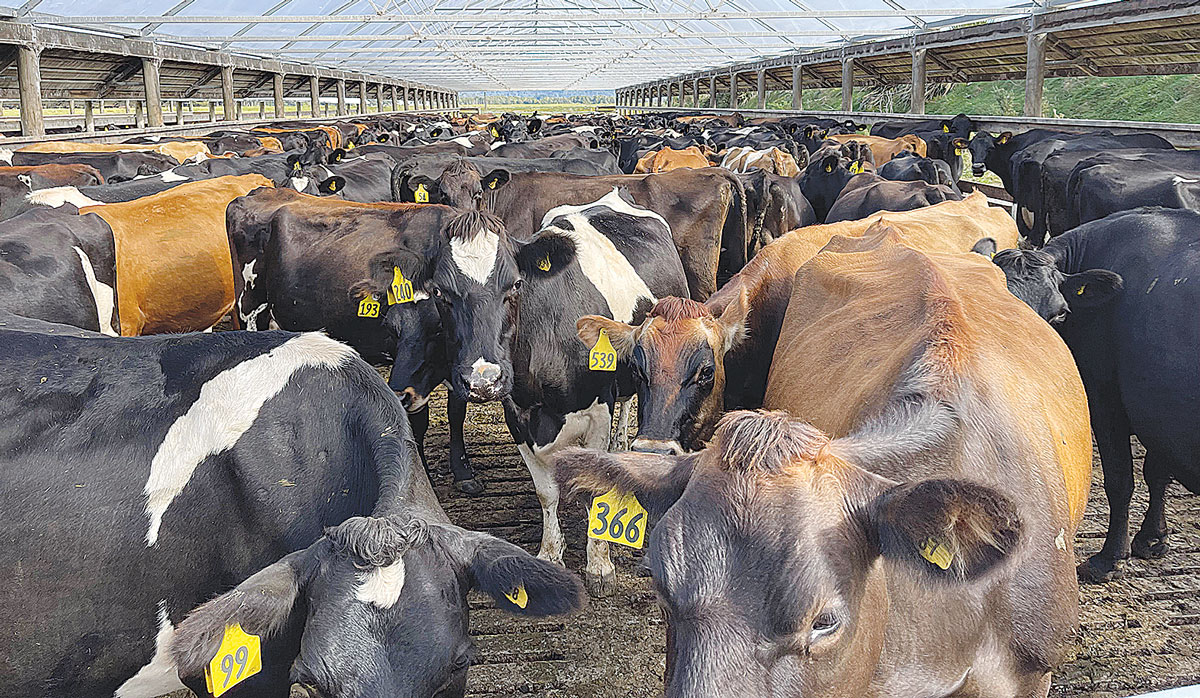NZAEL to update genetic base for Breeding Worth calculations
DairyNZ subsidiary New Zealand Animal Evaluation (NZAEL) will update the genetic base used to calculate Breeding Worth (BW) next month.
 West Coast farmer Andrew Robb believes the New Zealand farmer’s desire to get more from each cow is set to continue.
West Coast farmer Andrew Robb believes the New Zealand farmer’s desire to get more from each cow is set to continue.
During recent years West Coast farmer Andrew Robb has milked up to 925 cows on his 365ha (effective) dairy platform, but he’s driven numbers down since, and today is down to about 700 cows.
He says herd production has not been significantly compromised with the lower numbers, but profitability is certainly up, because farm costs have decreased with fewer cows – and in terms of MS output per cow, he’s getting plenty more bang-for-buck.
Robb believes the New Zealand farmer’s desire to get more from each cow is set to continue.
“Over time, with better technology and continued use of good genetics, we should be able to have the flexibility to lower our stock numbers further, because our cows are getting better, and there’s room for picking cows more accurately.
”Why the need to drop numbers? My theory is that herd sizes in general are likely to decrease over time, or at least hold, rather than increase, because politically and economically that’s what’s occurring, and the pressure is there.
“We’re [dairy farmers] no longer in a growth phase, so breeding goals have changed, and it’s really important to me to get the very best I can out of my genetics. My focus has changed from getting as many cows as I can, to utilising the best of what I’ve got to drive better performance from my existing stock.”
Robb’s herd is in the top 5% nationally for Breeding Worth (BW) and as the breeding goals have evolved, so has his mating strategy.
“For the past two mating seasons we’ve used 210 straws of fresh Sexed Semen during the first three weeks of AB.
“At the same time, I’ve used the Forward Pack Premier Sires, as well Stabiliser as a beef breed option.
“So I pick out 10 cows a day for the Sexed Semen, and that’s based on whether they’re a good, sound cow. I have a criteria: they’ve got to be within the top one-third of the herd (based on Production Worth and Breeding Worth), they’ve got to have recorded a pre-mating heat, and they must have calved for a certain length of time –pretty much they would have calved within the first six weeks.
“I use up my Sexed Semen on the first 10 cows, and the remainder of the really good cows go to Premier Sires... the rest will get a beef straw; Stabiliser beef genetics promise a low birth weight so that’s great for calving. “When they get to about 150-180 days they have very vigorous growth – they just take-off.
“And they’re quiet animals, almost quieter than our replacement calves.”
 |
|---|
|
Andrew Robb's herd is in the top 5% nationally for Breeding Worth (BW) and as the breeding goals have evolved, so has his mating strategy. |
After week-three of mating, all animals are put to Stabiliser beef until about week seven, then short gestation length Hereford and Angus is used for about 10 days before the bull is put out.
Having refined his mating approach over the past few years, Robb is particularly pleased with how his replacement stock is looking.
The R1 average BW is 295, while the R2 average BW is 236.
“That’s a result of Sexed Semen use, and influence of selecting from my top BW cows,” Robb says.
“The big leap is the Sexed Semen – I know it looks relatively expensive but we’re utilising the value of those calves and it pays for itself; I think more people are starting to realise that.
“My ultimate goal is to put collars on the cows and not to put the bull out at all.
“I’ll probably AI all my heifers too, because of the genomic test that LIC’s putting out to test the female’s DNA.”
Robb says getting genomic information on his female stock is yet another avenue that will further-refine what genetics he puts to Sexed Semen and Forward Pack, and what animals will be kept aside for beef.
Ideally Robb goes after a high Production Worth and Breeding Worth animal.
“Production (of milksolids) is most important to me obviously, but next in line is temperament and soundness.
“I don’t need a beauty queen, but I do need a good, solid body-type that I know is going to handle calving and that has good feet and good udders – there’s a correlation between some traits and longevity, and that’s what I’m after.
“I’m aware of my empty rate, six-week in-calf rate, and I know what my ideal levels are; I think I can improve things with technology like collars and genome testing on the cows over the next few seasons, and I’ll be moving toward that.
“That means I should be able to lower my replacement rate over time, because I’m trying to breed for longevity, and with the lower numbers they’ll be getting fed to their potential, so everything points toward them doing more, and lasting longer.”
Arable growers worried that some weeds in their crops may have developed herbicide resistance can now get the suspected plants tested for free.
Fruit growers and exporters are worried following the discovery of a male Queensland fruit fly in Auckland this week.
Dairy prices have jumped in the overnight Global Dairy Trade (GDT) auction, breaking a five-month negative streak.
Alliance Group chief executive Willie Wiese is leaving the company after three years in the role.
A booklet produced in 2025 by the Rotoiti 15 trust, Department of Conservation and Scion – now part of the Bioeconomy Science Institute – aims to help people identify insect pests and diseases.
A Taranaki farmer and livestock agent who illegally swapped NAIT tags from cows infected with a bovine disease in an attempt to sell the cows has been fined $15,000.
President Donald Trump’s decision to impose tariffs on imports into the US is doing good things for global trade, according…
Seen a giant cheese roll rolling along Southland’s roads?